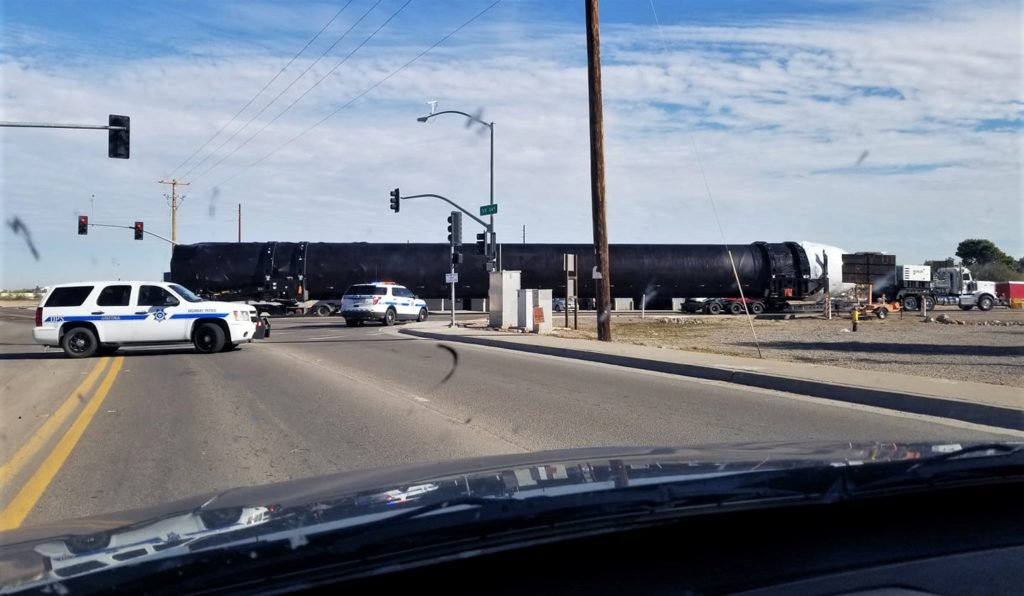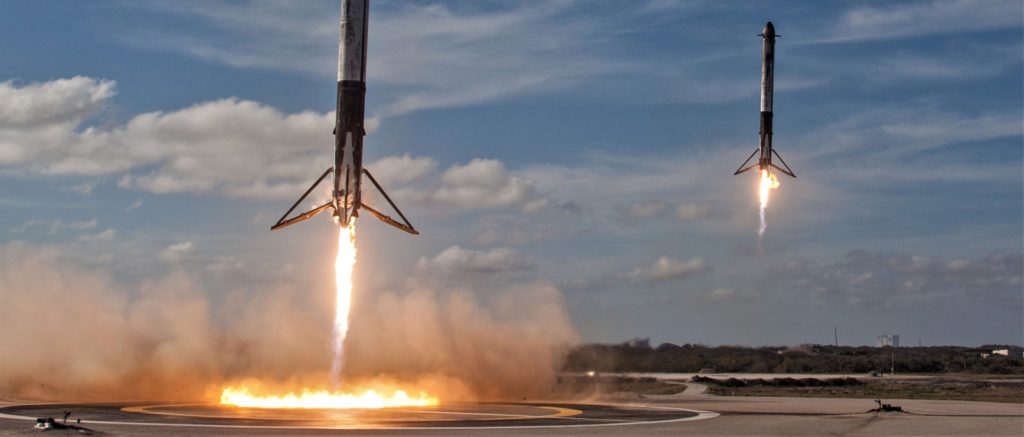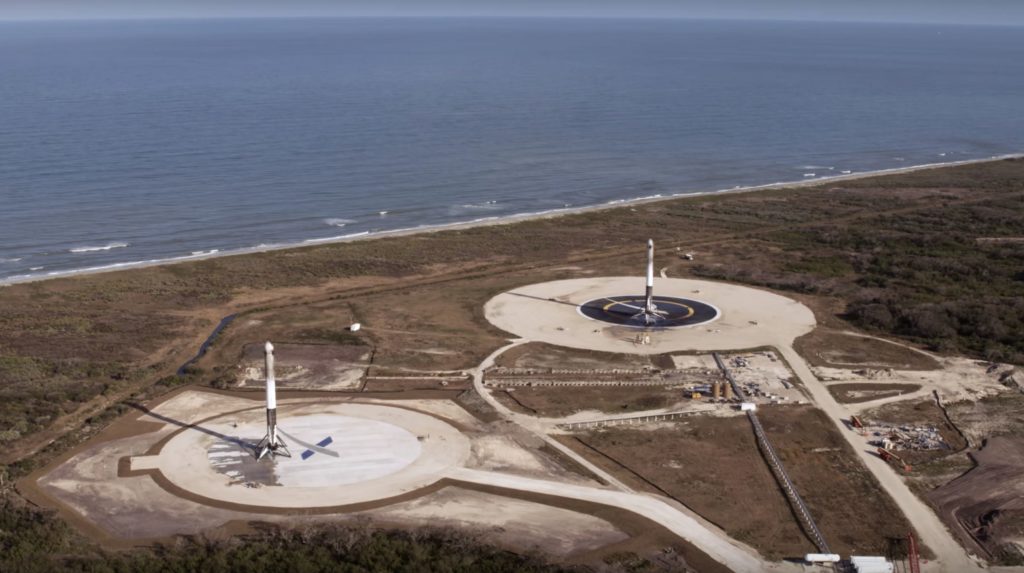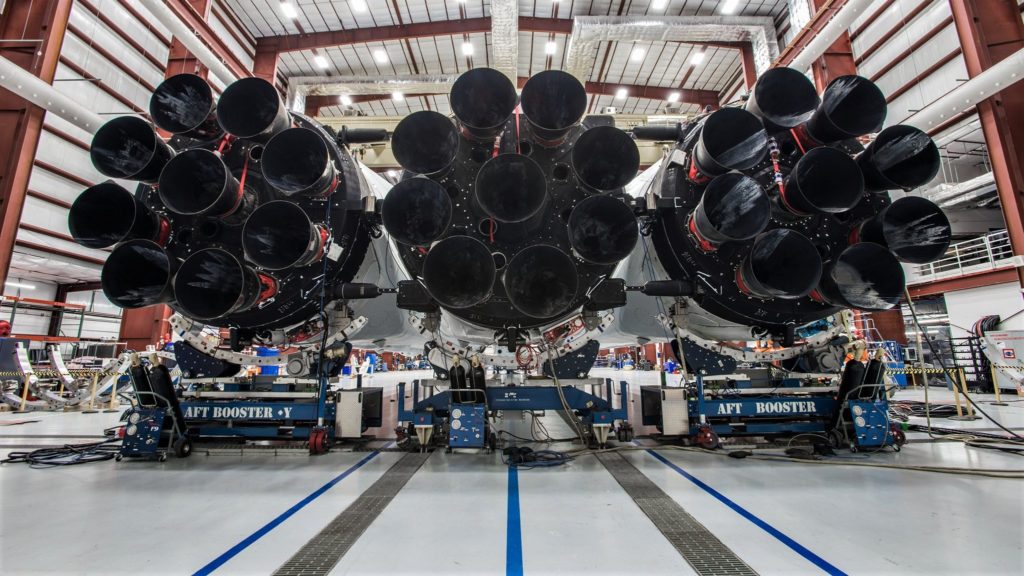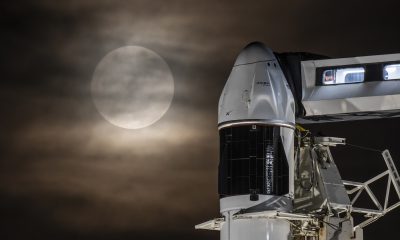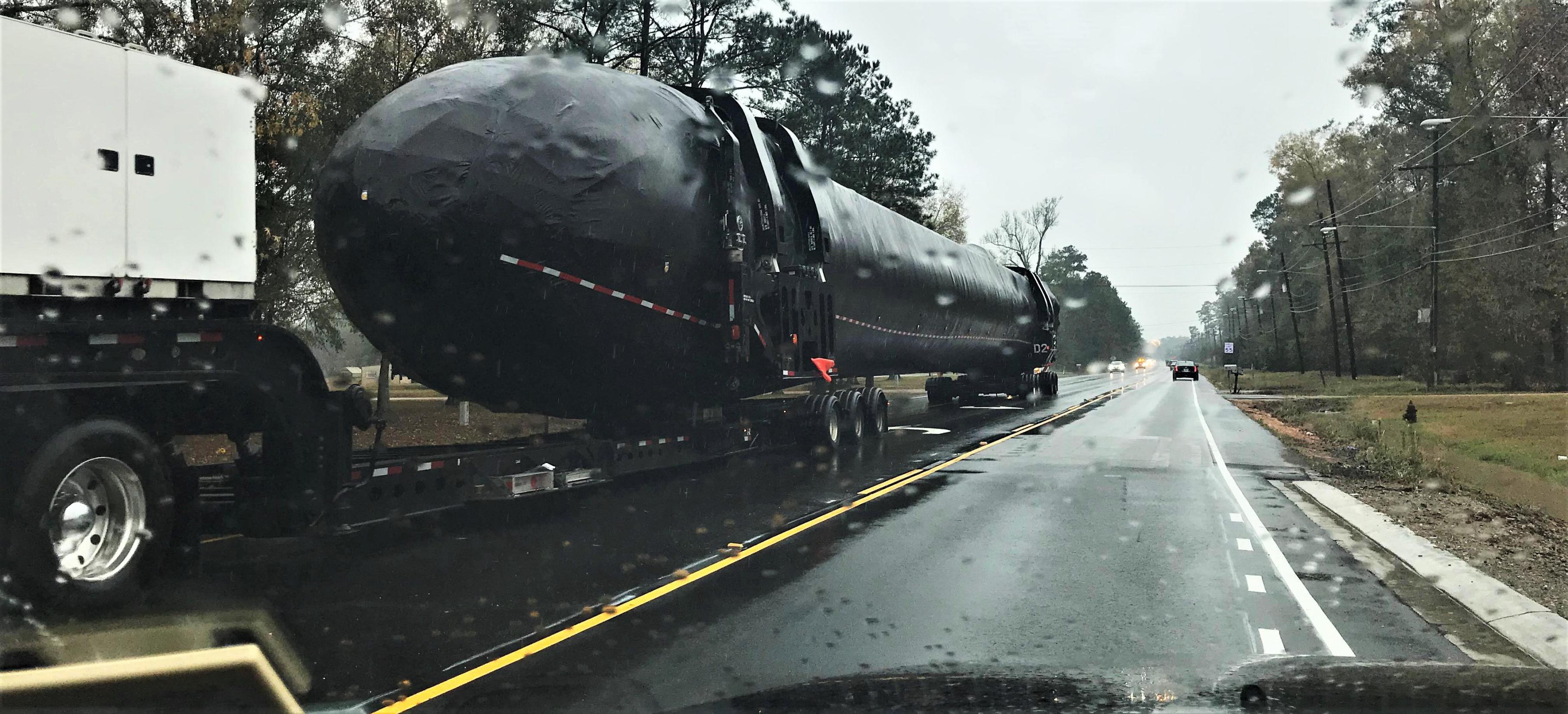

News
SpaceX to attempt back-to-back Falcon Heavy launches with booster reuse in 2019
SpaceNews reports that SpaceX is planning an impressive duo of Falcon Heavy launches in the first half of 2019, the heavy lift rocket’s second and third missions. According to Nicky Fox, NASA’s heliophysics division director, SpaceX intends to recover and reuse all three Falcon Heavy first stage boosters for both launches and apparently believes that it can recover and prepare them for a second launch in as few as 60 days.
Following a highly successful February 2018 launch debut, SpaceX has targeted the launches of commercial satellite Arabsat 6A and the USAF’s Space Test Program 2 (STP-2) in the second half of 2018, a schedule that rapidly realigned to H1 2019. If the unofficial plan described above turns out to be true, the USAF will apparently become the first commercial customer to launch on a flight-proven Falcon Heavy.
NASA looking to launch delayed space science missions in early 2019 https://t.co/Q3wojAStr5 pic.twitter.com/YBp4lhF1bo
— SpaceNews (@SpaceNews_Inc) December 19, 2018
A Reddit user was lucky enough to spot one of SpaceX’s next-gen Falcon Heavy side boosters – coincidentally just one day after Dr. Fox’s comments – on its way East through rainy Louisiana, undeniable evidence that the heavy lift rocket’s second (and third) launches have a real chance of happening in early 2019. According to Dr. Fox, SpaceX is seriously targeting a very rapid turnaround of Falcon Heavy’s next three first stage boosters, stating (admittedly without official confirmation) that SpaceX would be reusing the boosters from Arabsat 6A’s March 2019 launch on the planned April 2019 launch of STP-2.
“[Falcon Heavy] will launch [STP-2 in April] after the successful launch of Arabsat, which is currently manifested for March. [SpaceX] will recover and reuse the boosters, so we’re kind of watching what happens with that first launch.” – Dr. Nicky Fox via SpaceNews
Whether or not this officially unconfirmed information is correct, it certainly sounds like just the thing that CEO Elon Musk might challenge SpaceX to pull off, not to mention the fact that this would place the US Air Force in a situation requiring it to become the first commercial customer to launch on a flight-proven Falcon Heavy. This would be a truly dramatic change in attitude compared to comments made in just the last week, brought up in the context of SpaceX’s planned December 18 (now Dec 22) launch of the USAF’s first next-gen GPS satellite, GPS III SV01. In official comments provided to the media, the Air Force was extremely “uncertain” about allowing SpaceX to even attempt to recover its Falcon 9 booster, let alone allowing the company to fly Air Force payloads on flight-proven rockets.
- The second Falcon Heavy booster in four weeks was spotted Eastbound in Arizona by SpaceX Facebook group member Eric Schmidt on Dec. 3. (Eric Schmidt – Facebook)
- Falcon Heavy’s two side boosters landed side-by-side after a successful launch debut. (SpaceX)
- LZ-1 and LZ-2, circa February 2018. (SpaceX)
- Falcon Heavy ahead of its inaugural launch. (SpaceX)
Admittedly, the intentions behind STP-2 differ drastically from GPS III SV01. As the name suggests, the missions falls under a program explicitly designed to test and prove out new launch vehicles in the context of fast-tracking their certification for higher-value Air Force spacecraft. Falcon 9 could almost certainly launch STP-2 in a reusable configuration, but the USAF chose Falcon Heavy – and included literal dead weight – because the military branch is very interested in the rocket’s potential utility for more serious National Security Space missions.
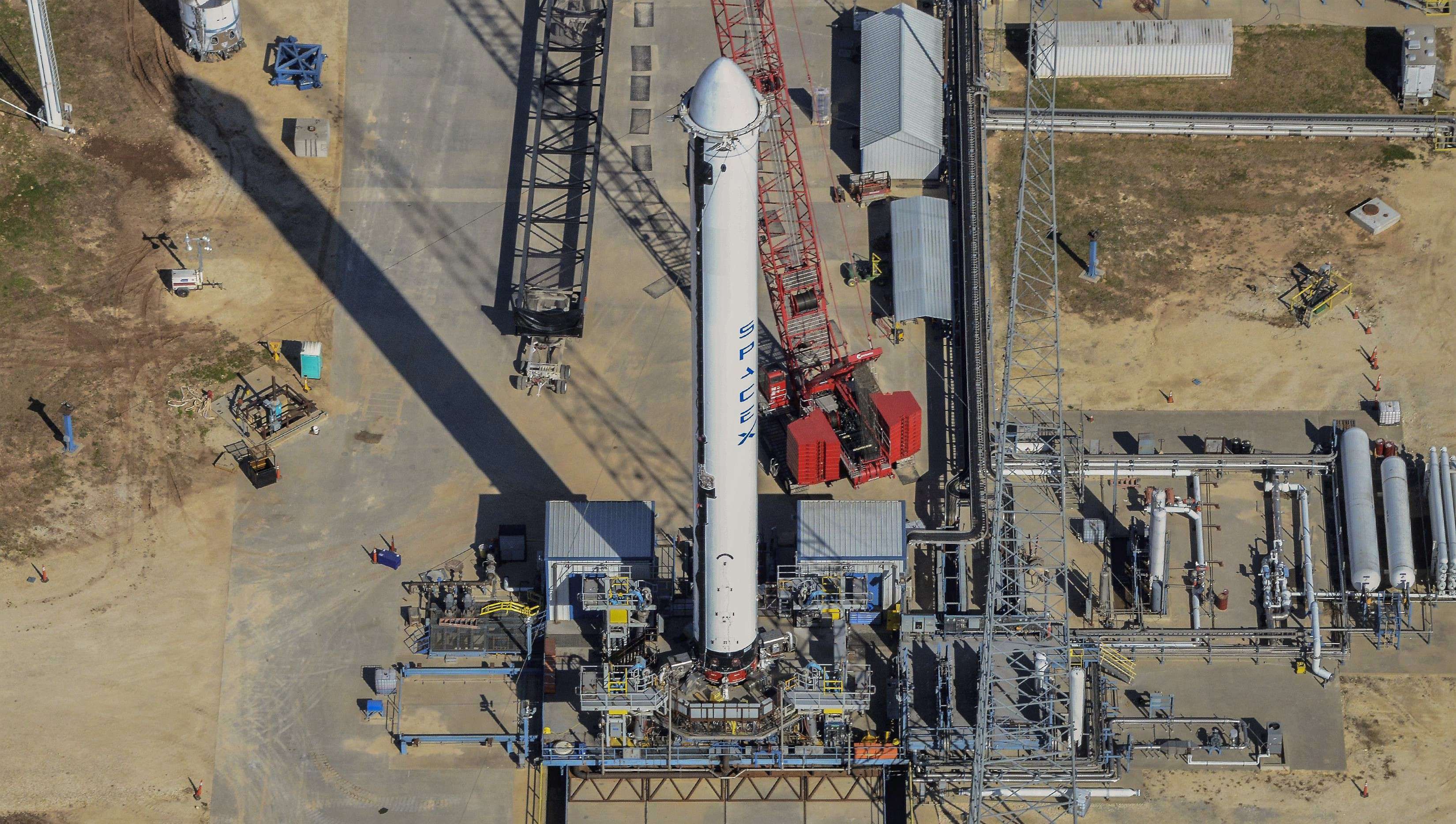
SpaceX’s first Falcon Heavy launch famously featured flight-proven side boosters that performed jaw-dropping simultaneous landings at LZ-1 and LZ-2. Chances are good that Falcon Heavy Flight 2 and 3 will both feature additional attempts at simultaneous LZ booster landings. If SpaceX can find a way to launch Falcon Heavy twice in barely two months while still reusing all three first stage boosters, it’s hard to imagine a better way to demonstrate the economic and technological viability of both Falcon Heavy and Block 5’s reusability upgrades.
For prompt updates, on-the-ground perspectives, and unique glimpses of SpaceX’s rocket recovery fleet check out our brand new LaunchPad and LandingZone newsletters!
Elon Musk
Why Tesla’s Q3 could be one of its biggest quarters in history
Tesla could stand to benefit from the removal of the $7,500 EV tax credit at the end of Q3.

Tesla has gotten off to a slow start in 2025, as the first half of the year has not been one to remember from a delivery perspective.
However, Q3 could end up being one of the best the company has had in history, with the United States potentially being a major contributor to what might reverse a slow start to the year.
Earlier today, the United States’ House of Representatives officially passed President Trump’s “Big Beautiful Bill,” after it made its way through the Senate earlier this week. The bill will head to President Trump, as he looks to sign it before his July 4 deadline.
The Bill will effectively bring closure to the $7,500 EV tax credit, which will end on September 30, 2025. This means, over the next three months in the United States, those who are looking to buy an EV will have their last chance to take advantage of the credit. EVs will then be, for most people, $7,500 more expensive, in essence.
The tax credit is available to any single filer who makes under $150,000 per year, $225,000 a year to a head of household, and $300,000 to couples filing jointly.
Ending the tax credit was expected with the Trump administration, as his policies have leaned significantly toward reliance on fossil fuels, ending what he calls an “EV mandate.” He has used this phrase several times in disagreements with Tesla CEO Elon Musk.
Nevertheless, those who have been on the fence about buying a Tesla, or any EV, for that matter, will have some decisions to make in the next three months. While all companies will stand to benefit from this time crunch, Tesla could be the true winner because of its sheer volume.
If things are done correctly, meaning if Tesla can also offer incentives like 0% APR, special pricing on leasing or financing, or other advantages (like free Red, White, and Blue for a short period of time in celebration of Independence Day), it could see some real volume in sales this quarter.
You can now buy a Tesla in Red, White, and Blue for free until July 14 https://t.co/iAwhaRFOH0
— TESLARATI (@Teslarati) July 3, 2025
Tesla is just a shade under 721,000 deliveries for the year, so it’s on pace for roughly 1.4 million for 2025. This would be a decrease from the 1.8 million cars it delivered in each of the last two years. Traditionally, the second half of the year has produced Tesla’s strongest quarters. Its top three quarters in terms of deliveries are Q4 2024 with 495,570 vehicles, Q4 2023 with 484,507 vehicles, and Q3 2024 with 462,890 vehicles.
Elon Musk
Tesla Full Self-Driving testing continues European expansion: here’s where
Tesla has launched Full Self-Driving testing in a fifth European country ahead of its launch.

Tesla Full Self-Driving is being tested in several countries across Europe as the company prepares to launch its driver assistance suite on the continent.
The company is still working through the regulatory hurdles with the European Union. They are plentiful and difficult to navigate, but Tesla is still making progress as its testing of FSD continues to expand.
Today, it officially began testing in a new country, as more regions open their doors to Tesla. Many owners and potential customers in Europe are awaiting its launch.
On Thursday, Tesla officially confirmed that Full Self-Driving testing is underway in Spain, as the company shared an extensive video of a trip through the streets of Madrid:
Como pez en el agua …
FSD Supervised testing in Madrid, Spain
Pending regulatory approval pic.twitter.com/txTgoWseuA
— Tesla Europe & Middle East (@teslaeurope) July 3, 2025
The launch of Full Self-Driving testing in Spain marks the fifth country in which Tesla has started assessing the suite’s performance in the European market.
Across the past several months, Tesla has been expanding the scope of countries where Full Self-Driving is being tested. It has already made it to Italy, France, the Netherlands, and Germany previously.
Tesla has already filed applications to have Full Self-Driving (Supervised) launched across the European Union, but CEO Elon Musk has indicated that this particular step has been the delay in the official launch of the suite thus far.
In mid-June, Musk revealed the frustrations Tesla has felt during its efforts to launch its Full Self-Driving (Supervised) suite in Europe, stating that the holdup can be attributed to authorities in various countries, as well as the EU as a whole:
Tesla Full Self-Driving’s European launch frustrations revealed by Elon Musk
“Waiting for Dutch authorities and then the EU to approve. Very frustrating and hurts the safety of people in Europe, as driving with advanced Autopilot on results in four times fewer injuries! Please ask your governing authorities to accelerate making Tesla safer in Europe.”
Waiting for Dutch authorities and then the EU to approve.
Very frustrating and hurts the safety of people in Europe, as driving with advanced Autopilot on results in four times fewer injuries!
Please ask your governing authorities to accelerate making Tesla safer in Europe. https://t.co/QIYCXhhaQp
— Elon Musk (@elonmusk) June 11, 2025
Tesla said last year that it planned to launch Full Self-Driving in Europe in 2025.
Elon Musk
xAI’s Memphis data center receives air permit despite community criticism
xAI welcomed the development in a post on its official xAI Memphis account on X.

Elon Musk’s artificial intelligence startup xAI has secured an air permit from Memphis health officials for its data center project, despite critics’ opposition and pending legal action. The Shelby County Health Department approved the permit this week, allowing xAI to operate 15 mobile gas turbines at its facility.
Air permit granted
The air permit comes after months of protests from Memphis residents and environmental justice advocates, who alleged that xAI violated the Clean Air Act by operating gas turbines without prior approval, as per a report from WIRED.
The Southern Environmental Law Center (SELC) and the NAACP has claimed that xAI installed dozens of gas turbines at its new data campus without acquiring the mandatory Prevention of Significant Deterioration (PSD) permit required for large-scale emission sources.
Local officials previously stated the turbines were considered “temporary” and thus not subject to stricter permitting. xAI applied for an air permit in January 2025, and in June, Memphis Mayor Paul Young acknowledged that the company was operating 21 turbines. SELC, however, has claimed that aerial footage shows the number may be as high as 35.
Critics are not giving up
Civil rights groups have stated that they intend to move forward with legal action. “xAI’s decision to install and operate dozens of polluting gas turbines without any permits or public oversight is a clear violation of the Clean Air Act,” said Patrick Anderson, senior attorney at SELC.
“Over the last year, these turbines have pumped out pollution that threatens the health of Memphis families. This notice paves the way for a lawsuit that can hold xAI accountable for its unlawful refusal to get permits for its gas turbines,” he added.
Sharon Wilson, a certified optical gas imaging thermographer, also described the emissions cloud in Memphis as notable. “I expected to see the typical power plant type of pollution that I see. What I saw was way worse than what I expected,” she said.
-

 Elon Musk3 days ago
Elon Musk3 days agoTesla investors will be shocked by Jim Cramer’s latest assessment
-

 News1 week ago
News1 week agoTesla Robotaxi’s biggest challenge seems to be this one thing
-

 News2 weeks ago
News2 weeks agoTexas lawmakers urge Tesla to delay Austin robotaxi launch to September
-

 Elon Musk2 weeks ago
Elon Musk2 weeks agoFirst Look at Tesla’s Robotaxi App: features, design, and more
-

 Elon Musk2 weeks ago
Elon Musk2 weeks agoxAI’s Grok 3 partners with Oracle Cloud for corporate AI innovation
-

 News2 weeks ago
News2 weeks agoSpaceX and Elon Musk share insights on Starship Ship 36’s RUD
-

 News2 weeks ago
News2 weeks agoWatch Tesla’s first driverless public Robotaxi rides in Texas
-

 News2 weeks ago
News2 weeks agoTesla has started rolling out initial round of Robotaxi invites

